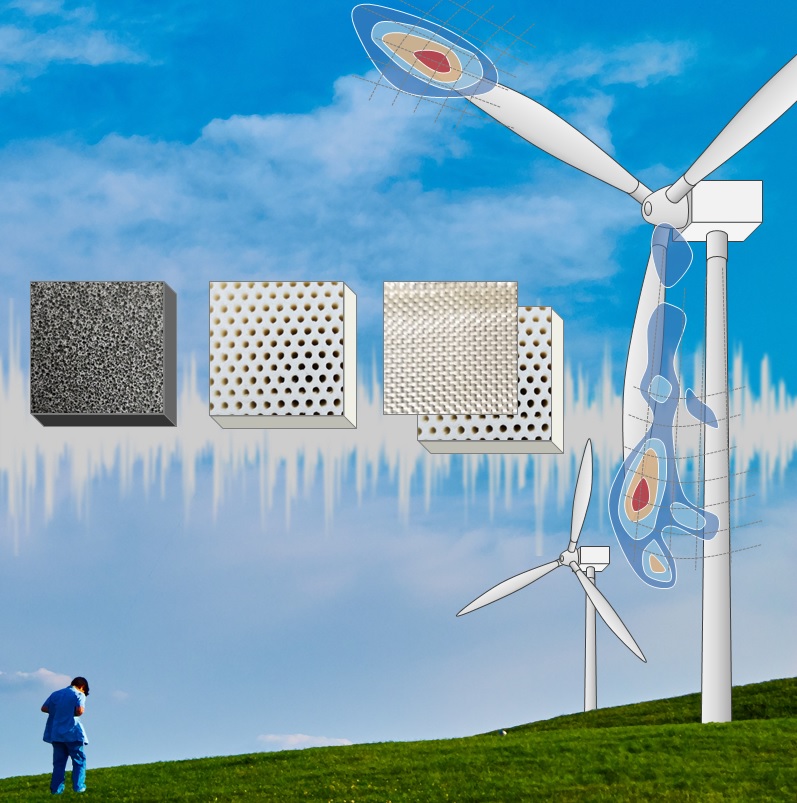New aircraft technologies
Ducted Propellers
Investigating new aircraft technologies is important to know what effect this really has on the noise. Sometimes new aircraft technologies are not as beneficial for noise reduction as expected.
UAV's
For UAV’s duct propellers are often used to improve aerodynamic efficiency. It would be expected that as a side effect, the noise would be reduced by the physical barrier. However, research had concluded that the noise reduction is not that much. There are even some frequencies that are enhanced by the ducts.
This has been validated in a controlled environment. This is where the tool is compared with the experimental results.

For more information about this topic, you can contact Prof. Dr. Ir. Dick Simons
Pourous Airfoils
Similar to the serrated airfoils, using porous airfoils the trailing edge of an airfoil is edited such that it produces less noise. Before the flow over an airfoil reaches the trailing edge, it starts to communicate on both sides, and thus scatter less noise on the trailing edge of the airfoil.
The research
Metal porous trailing edges are already proven to reduce noise scattered. However, these are unlikely to be applied in real life. Lightning is a problem, and the structures act as filters for dust in the air. Salil Luesutthiviboon has worked on defining a set of parameters that will describe the noise reduction porous materials could make. Since metal porous foams are already tested, these are investigated to understand how they work in order to apply it to some new structure that could be applied in real life. The permeability is the most important parameter, but they have already found that different materials with the same permeability do not have the same noise reduction. Furthermore, the tortuosity, how long the way from point A to point B is, is investigated as it has an effect on the noise reduction.
The goal
The ultimate goal of this research is "to come up with something specifically designed to work in real wind turbines." Salil explains "Collaboration is really important, this project is funded by some industrial partners, and we have to work with aerodynamics and aeroacoustics. We have to think a lot about the applications."
Aerodynamic properties
Of course, making holes in the trailing edge of an airfoil is disadvantageous for the aerodynamic properties of the airfoil. The part of the chord that is made porous is a trade-off between noise and aerodynamics. Luckily, most of the lift contribution is from the leading edge. Although the pressure distribution is measured, aerodynamics is still in the modelling process. The numerical models that are being created are still to be validated in later years.
For more information about this topic, you can contact S. (Salil) Luesutthiviboon
Serrated Airfoils
Reducing noise with noise reduction measures is clearly illustrated with the serrated airfoils. This method is inspired by owls.
Owls
In many countries, such as The Netherlands, a lot of complaints are received from people living in the vicinities of wind turbines because of the noise they produce. Thus, these high noise levels limit the maximum rotational speed that these turbines can operate at, as well as the locations where they can be placed, with the consequent loss of revenue. Dr. Roberto Merino Martinez investigated the effect of trailing-edge serrations on airfoil noise: “When you check the wings of the owl, it has a saw-tooth shape at the tip of the feathers. If you replicate this at the trailing edge of a wind turbine blade, it considerably reduces the noise emissions.” This solution leads to a noise reductions up to 10 dB, confirming that simple solutions can indeed reduce the noise substantially.


For more information about this topic, you can contact Dr. R. (Roberto) Merino Martinez
